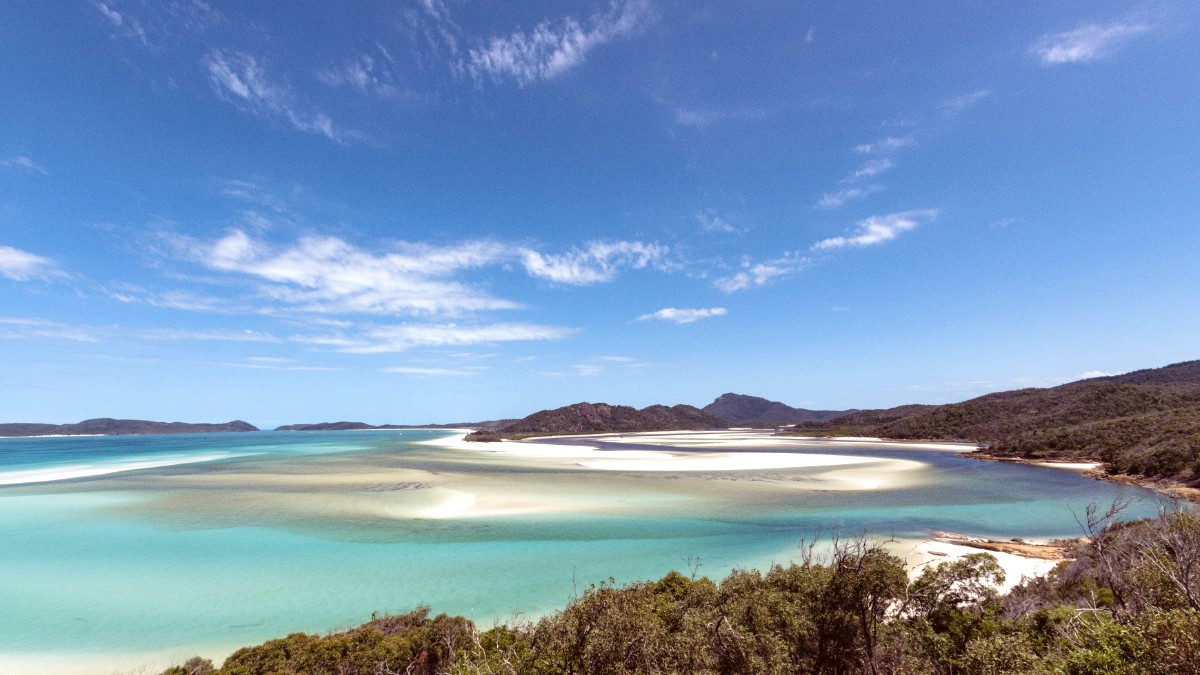
Queensland, Australia
Temperatures during the day typically range from 20-27°C (68-81°F). Nights are cooler, making for comfortable sleeping conditions.
Rainfall is minimal, with many days offering clear, sunny skies. This season presents the lowest humidity levels, resulting in a pleasant and comfortable outdoor experience. Expect calm seas, clear visibility for water activities, and a refreshing breeze. This period delivers consistent, bright weather.
Significant risk during wet season (Dec-Apr)
Strong winds, heavy rain, flooding, travel disruptions, tour cancellations, airport closures.
Monitor forecasts closely (Bureau of Meteorology - BOM), acquire travel insurance covering weather disruptions.
Jellyfish presence (Oct-May)
Irukandji and Box Jellyfish, painful, potentially dangerous stings.
Wear full-body stinger suits for ocean swimming, observe local warnings, swim in patrolled areas.
Intense heat and humidity (wet season)
Can feel intense for those unaccustomed to tropical conditions.
Stay hydrated, seek shade, wear light, breathable clothing.
The dry season (May to October) has the most consistent good weather. Expect calmer seas and predictable winds, ideal for navigating the islands and enjoying smooth sailing. This period reduces the likelihood of rain interrupting your time on the water.
May to October presents the best conditions for underwater exploration. Water clarity is better, and the absence of heavy rainfall means less sediment in the water. While stinger suits are good year-round for peace of mind, they become a practical necessity during the wet season.
May to September avoids extreme heat, humidity, and slippery conditions.
Year-round enjoyment, dry season for consistent sun, wet season for stinger suits.
Humpback Whales migrate through Whitsunday Passage from May to September.
Calmer waters in the dry season are ideal for paddling.
Dry season offers clear skies; wet season brings dramatic clouds.
Travelers entering Australia, including the Whitsunday Islands, meet specific visa and entry requirements. These vary based on your nationality and the purpose and duration of your visit. Plan your visa application well in advance of your departure date.
Passport holders from over 30 countries and regions qualify for an ETA. This list includes the United States, Canada, Japan, Singapore, Hong Kong, South Korea, Malaysia, and most European Union countries (though many EU countries also qualify for the eVisitor visa).
This visa type applies to passport holders from all 27 European Union member countries, as well as several other European countries like the United Kingdom, Norway, Iceland, Switzerland, and Liechtenstein.
Travelers from all other nationalities not eligible for an ETA or eVisitor visa must apply for a Visitor Visa. This visa also suits those wishing to stay longer than 3 months on a single visit.
ETA has a service charge, eVisitor is free, and the Visitor Visa (Subclass 600) incurs a significant fee. These fees are non-refundable, even if your application is refused.
| Procedure | Description | Notes |
|---|---|---|
| SmartGates | Automated gates using facial recognition and ePassports. | Available at major airports (Brisbane), quick processing. |
| Manual Counters | For certain passport types, families, or if SmartGates are unavailable. | An officer checks passport and visa. |
| Incoming Passenger Card | Declare goods (food, plants, currency over AUD$10,000). | Declare accurately to avoid penalties; strict biosecurity laws. |
Costs vary significantly based on your travel style, from budget-friendly backpacking to luxury resort experiences.
The official currency is the Australian Dollar (AUD), denoted as $ or A$.
Major credit cards (Visa, Mastercard, Amex) are widely accepted.
Carry a small amount for minor purchases, though card payments are prevalent.
ATMs are readily available in Airlie Beach, Proserpine, and Hamilton Island for AUD withdrawals.
Currency exchange services are less common in the Whitsundays. Withdrawing cash from an ATM or using credit cards is generally more convenient and cost-effective.
Check with your bank regarding international transaction fees to avoid unexpected charges.
Card payments are the standard for most transactions throughout the region.
Hostel dorms (AUD$30-60), self-catering, pub lunch specials, free activities.
Mid-range hotels (AUD$80-200), casual dining, island day trips, some water activities.
Premium resorts (AUD$250+), fine dining, private transfers, scenic flights, yacht charters.
Prices fluctuate based on season, demand, and specific choices.
Airlie Beach bus: AUD$3-5. PPP to Airlie Beach Shuttle: AUD$25-30. Ferry to Hamilton Island: AUD$65-80. Golf Buggy (Hamilton Island): AUD$90-120/day.
Day Tour Whitehaven/Reef: AUD$150-300+. Scenic Flight: AUD$250-500+. Jet Ski Tour: AUD$150-250.
Multi-day trips: AUD$300-800+ (often includes meals and activities).